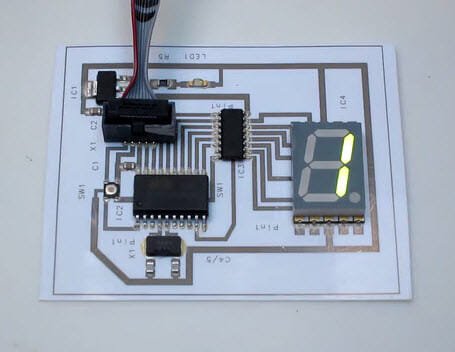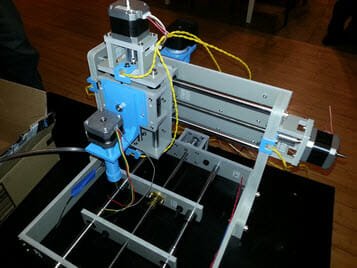Print Electronic Circuit Boards with A Solder Free Assembling Technique in minutes
Have you ever tried to print electronic circuit boards in your home from your desktop? Being an electronics engineer, I never even thought of this as an extensive methodology with a complete set up of expensive apparatus is needed to make things rolling. To my knowledge, without a mass approach it’s a tough mission for any individual, but with the due power of creativity, cradled with our species, we made monumental changes. Squink is one of them. It will let you print electronic circuit boards with a complete solder free assembling technique from your desktop within minutes and the most importantly, at the ‘cost of a cup of coffee’.

We have stepped into a new age, a new arena of engineering. 3D printing is not a fiction anymore and it already has started shaping our future ideas, visions into real tangible objects. However, this revolution has aided, chiefly, designers from every known branch of technology except electronics. Prior to this, mass printing of electronic circuit boards always has a messy and expensive deal for developers. BotFactory had the vigour to walk in the scenario to bring in a change with this newborn concept.
How it works?
Basically, Squink is an adequately small sized smart electronic circuit printer which can be placed, easily, on a living room table. It works in two stages. Namely, printing and assembling. At first, it prints a circuit on a substrate using a conductive ink by a simple inkjet printing method. Then, it applies conductive glue dots on the printed circuit to hold components. Finally, for the complete assembly, it picks up components, align them to proper polarity and place them on the glue dots. This whole process jets to an end within a few minutes.

Additionally, it also offers multilayer printing. When a single layer of circuit printing is done, immediately, it paints a protective insulation layer on the whole layer. After going through a heat curing procedure, it’s ready to print another circuit on that insulated layer. By this, It integrates more than one circuit by printing it on a single substrate. Smart. Right?
How it connects with my desktop?
The best way is, wirelessly. Also, it can connect with your desktop with other methods of networking like, USB, Ethernet connections. Moreover, you don’t have to install or set up anything on your desktop to command it. It uses a pure web based interface to interact with your computer. A simple drag and drop will be enough to initiate a printing process.
It can read and print from any Gerber file which is a bit popular with electronic circuit designers. If you are not that much familiar with this type of files, Squink will not dishearten you. It can also print circuits from popular image formats which are familiar to the most of us like, .jpg, .png.
To me, Squink is less a startup, more a revolution. It purchases your freedom in many ways. Firstly, you can turn your face from those PCB manufacturers who consume much of your productive time by making you wait to get your circuit from them. Its portability makes you free from being place specific. You can carry the printer anywhere you want to start printing. Added to this, it also diminishes the existing developing cost of any circuit.
Lastly, it empowers you to invest your precious time more in brainstorming, less in developing the physical circuit board and let you assemble other components with the printed circuit without event lifting a finger. With Squink, endorse your craziness in electronics. Turn them into real projects. If you share the same vision, honour their pledge on Kickstarter or join the team.